
In September of 2017, I received slightly over $100K from my former employer, representing the commuted value of my pension plan. I decided to invest 100% of this money in dividend growth stocks.
Each month, I publish my results on those investments. I don’t do this to brag. I do this to show my readers that it is possible to build a lasting portfolio during all market conditions. Some months we might appear to underperform, but you must trust the process over the long term to evaluate our performance more accurately.
It appears this old saying makes the front page yearly as we enter the “deadly” month of May. I decided to visit the concept after receiving a question from one of our active and long-time DSR members (thank you Ron!).
Performance in Review
Let’s start with the numbers as of May 3rd 2024 (before the bell):
Original amount invested in September 2017 (no additional capital added): $108,760.02.
- Current portfolio value: $244,488.84
- Dividends paid: $4,554.00 (TTM)
- Average yield: 1.83%
- 2023 performance: +20.69%
- SPY= +26.19%, XIU.TO = +11.87%
- Dividend growth: +1.7%
Total return since inception (Sep 2017 – April 2024): 124.80%
Annualized return (since September 2017 – 80 months): 12.92%
SPDR® S&P 500 ETF Trust (SPY) annualized return (since Sept 2017): 13.03% (total return 126.30%)
iShares S&P/TSX 60 ETF (XIU.TO) annualized return (since Sept 2017): 9.15% (total return 79.29%)
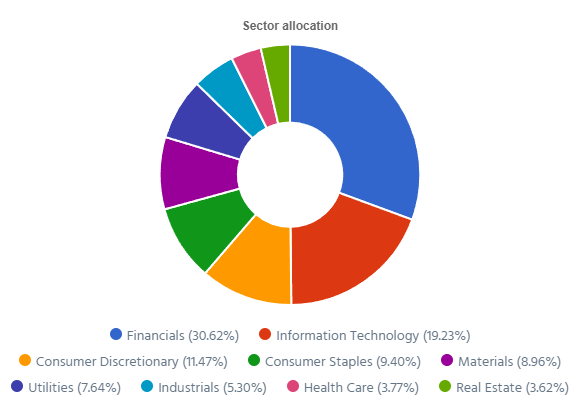
Why I Don’t Sell in May and “GO Away”
It appears this old saying makes the front page yearly as we enter the “deadly” month of May. I decided to visit the concept after receiving a question from one of our active and long-time members (thank you Ron!). The idea is simple: many investors believe the stock market generates a better return between November and April than between May and October. Many events contributed to convincing investors that summer and the beginning of fall were really bad months:
- The financial crisis of ’08 (which started with the Lehman Brothers bankruptcy during that summer),
- The tech bubble of 2000 (which started in April, but the last “peak” before the major drop was in August),
- The Black Monday of 1987 (which was in October),
- The crash of 1929 (which also happened in October)
I found an interesting article on Forbes showing that 50+ years of statistics confirm that the “best” months are indeed between November and April:
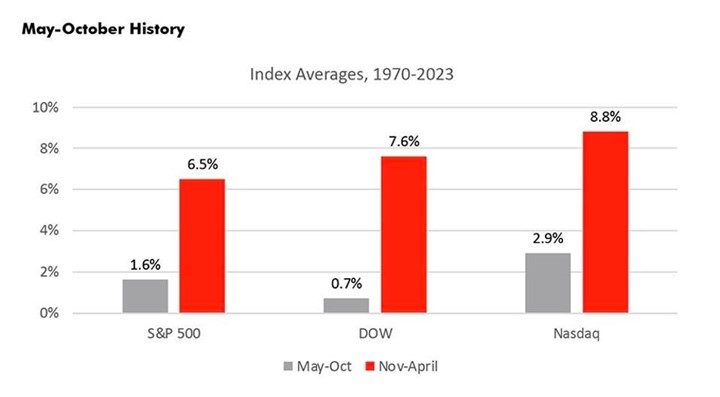
The article also highlights the impact coming from the presidential cycles: “This amazing fact speaks to the strength of the first half of the third year of the presidential cycle, which is by far the best six-month period of the whole presidential cycle. In fact, for the S&P 500, it is the only historical 6-month period of the four-year cycle with double-digit returns…”
Now, looking at this chart could make you believe that it’s best to invest only in the “good months”. My guess is that since most, if not all, market crashes happened during the summer or the beginning of fall, that most investors want to avoid that. Many investors will call this “risk management”, but I already defined the difference between risk and volatility in previous newsletter issues and webinars. What we don’t want as investors is to see our portfolio value crashing. That has nothing to do with risk, but everything to do with volatility.
In other words: most investors want to avoid volatility at all costs.
By avoiding volatility, you create a real risk
Let’s imagine you skip those “deadly” months in the hope of avoiding market crashes. One may think it sounds like a solid strategy and that would generate better returns, right?
Nope, niet, nada or “pas pantoute!” for my Quebecers readers.
In another article, Manulife makes a pretty solid statement on “buy and hold” being the best strategy. It compared the results of sticking to your plan (buy & hold) vs. following the markets’ seasonality. The results are shocking:
By avoiding volatility, you purposely handicap your portfolio. You restrain it from generating the returns you need to retire. While you may sleep better at night if you are in “cash”, you are leaving a lot of money on the table.
If we go back to the first chart of this section, while May to October clearly underperformed November to April, the S&P 500, the Dow, and the Nasdaq still show positive results on average. Therefore, you are willingly saying no to more money when you move back into cash “just in case”.
The reasons why I would never sell in May and go away are legion:
- Buy & hold win over time,
- I want to get those dividends paid between May and October,
- I don’t want to doubt the timing of when I should go back into the market (November 1st or the 15th? Or December?),
- Trades in taxable accounts would create lots of capital gains (paying taxes now instead of later is always bad).,
- I have a strong conviction in my holdings, and I don’t see why I would let them go for a few months,
- The opportunity cost is significant and puts my portfolio at risk,
- It’s easier to do nothing than to try to fix something that is not broken,
- I already went through pretty good returns during those “bad” months!
Nobody wants to see their portfolio value go down by 20%. But that’s part of the game. If you don’t like that aspect of investing, the solution should be found in your asset allocation (e.g. less exposure to equities will reduce your chances of being down 20% at a specific time).
If I wanted to reduce volatility in my portfolio, I would change my asset allocation instead of trying to “time the market”. In my view, it makes more sense to build a GIC or bond ladder (especially with the current interest rates) than making multiple transactions twice a year in the hope of avoiding a potential crisis. Imagine that the next crisis happens in January. You would have missed a good return from May to November to get back in the market right before a market crash…
I know one thing: my crystal ball is not clear enough to always provide me with the right month to rejoin the market.
I know another thing: the best time to invest is always “today”.
Smith Manoeuvre Update
Slowly but surely, the portfolio is taking shape with 10 companies spread across 7 sectors. My goal is to build a portfolio generating 4-5% in yield across 15 positions. I will continue to add new stock monthly until I reach that goal. My current yield is 5.33%.
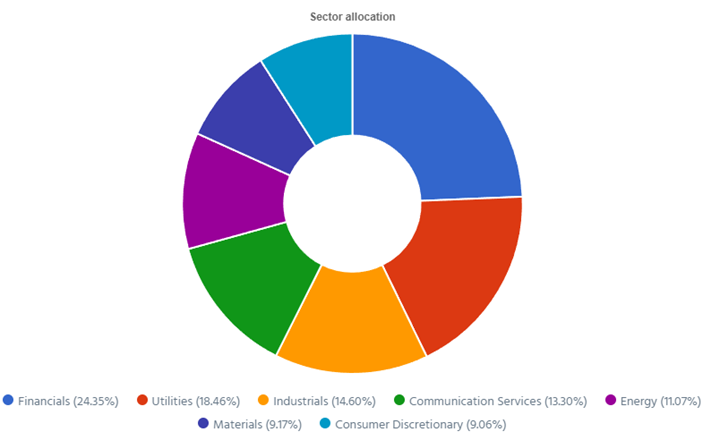
Doubling down on Capital Power (CPX.TO) (adding 14 shares @35.90)
Capital Power is trending a little lower and I used my $500 to add more shares. It increases my exposure to utilities is now 18.50% of my portfolio and it helps drive my portfolio yield to 5.33%.
In the coming months, I’m thinking of adding a few speculative plays or low-yield, high-growth stocks now that I have built a solid income-generating portfolio. The first goal of the Smith Manoeuvre is to use leverage to your advantage. While the interest wipes out the dividend income, I still want to see the SM portfolio go up in value. Right now, my high-yielders aren’t generating much return.
Here’s my SM portfolio as of May 3rd, 2024 (before the bell):
| Company Name | Ticker | Sector | Market Value |
| Brookfield Infrastructure | BIPC.TO | Utilities | $890.20 |
| Canadian National Resources | CNQ.TO | Energy | $1,126.29 |
| Capital Power | CPX.TO | Utilities | $1,039.65 |
| Canadian Tire | CTA.A.TO | Consumer Disc. | $927.43 |
| Exchange Income | EIF.TO | Industrials | $1,475.20 |
| Great-West Lifeco | GWO.TO | Financials | $709.24 |
| National Bank | NA.TO | Financials | $675.78 |
| Nutrien | NTR.TO | Materials | $935.48 |
| Telus | T.TO | Communications | $1,365.18 |
| TD Bank | TD.TO | Financials | $1,112.16 |
| Cash (Margin) | $68.52 | ||
| Total | $10,325.13 | ||
| Amount borrowed | -$10,000.00 |
Let’s look at my CDN portfolio. Numbers are as of May 3rd, 2024 (before the bell):
Canadian Portfolio (CAD)
| Company Name | Ticker | Sector | Market Value |
| Alimentation Couche-Tard | ATD.B.TO | Cons. Staples | $22,425.00 |
| Brookfield Renewable | BEPC.TO | Utilities | $9,525.36 |
| CCL Industries | CCL.B.TO | Materials | $9,870.00 |
| Fortis | FTS.TO | Utilities | $9,298.98 |
| Granite REIT | GRT.UN.TO | Real Estate | $8,910.08 |
| Magna International | MG.TO | Cons. Discre. | $4,634.00 |
| National Bank | NA.TO | Financials | $13,628.23 |
| Royal Bank | RY.TO | Financial | $8,823.10 |
| Stella Jones | SJ.TO | Materials | $11,680.00 |
| Cash | $1,163.45 | ||
| Total | $99,958.20 |
My account shows a variation of +$1,119.47 (+1.1%) since the last income report on April 5th.
Since many US companies have reported their earnings at the end of April, I’ll cover my Canadian holdings next month.
Here’s my US portfolio now. Numbers are as of May 3rd, 2024 (before the bell):
U.S. Portfolio (USD)
| Company Name | Ticker | Sector | Market Value |
| Apple | AAPL | Inf. Technology | $6,927.20 |
| Automatic Data Processing | ADP | Industrials | $9,197.14 |
| BlackRock | BLK | Financials | $10,598.00 |
| Brookfield Corp. | BN | Financials | $14,285.95 |
| Home Depot | HD | Cons. Discret. | $10,065.90 |
| LeMaitre Vascular | LMAT | Healthcare | $6,677.00 |
| Microsoft | MSFT | Inf. Technology | $18,698.48 |
| Starbucks | SBUX | Cons. Discret. | $7,043.42 |
| Texas Instruments | TXN | Inf. Technology | $8,790.00 |
| Visa | V | Financials | $13,380.50 |
| Cash | $10.64 | ||
| Total | $105,674.23 |
My account shows a variation of -$2,091.14 (-1.95%) since the last income report on April 5th.
Apple beats expectations on weak numbers
On May 2nd, Apple reported weak numbers compared to last year (revenue was down 4%, while EPS was up 1%), but it was better than expected. Revenue from Greater China fell 8.1% as Apple faced more competition. Sales by segment: iPhone: -10.5%, Mac: +3.9%, iPad: -16.66%, Wearables, Home and Accessories: -9.6%, and Services: +14.15%. During the quarter, Apple launched Apple Vision Pro and management said it will have “exciting” product announcements next week. AAPL also updated its capital return plan, adding $110B to its buyback program and raised its dividend by 4%.
Automatic Data Processing; payrolls are rolling!
On May 1st, ADP reported a solid quarter with revenue up 7% and EPS up 14%, thereby beating analysts’ expectations. This growth was supported by high customer retention rates and record third-quarter bookings in various business segments. The consistent growth in Employer Services and new business bookings keeps the company on track for meeting its full-year outlook. ADP continues to invest in strategic areas like GenAI, which is being integrated across its services to enhance client interactions and operational efficiency. The company reaffirmed its 2024 guidance: revenue +6% to +7%, Adjusted EPS +10% to +12%. This is looking good!
BlackRock gets some help from the market!
BLK reported a good quarter with revenue up 11% and EPS up 24% easily beating the analysts’ expectations. Results were primarily driven by the positive impact of the markets on average AUM, organic base fee growth, and higher performance fees and technology services revenue. Assets under management (AUM) jumped by $1.4T to a total of $10.5T (+15%), driven by organic growth along with a little help from Mr. market. The firm also reported a positive net inflow of $76B into long-term investment strategies showing confidence from investors.
LeMaitre Vascular is cutting its way into success!
On May 2nd, LeMaitre Vascular reported another solid quarter with revenues up 14% and EPS up 63% which beat the analysts’ expectations. Allografts (+31%), bovine patches (+13%), carotid shunts (+27%) and distributed porcine patches drove Q1 sales. Sales surged in the Asia Pacific region (+44%) and remained strong in Europe, the Middle East and Africa (+17%) and also in America (+10%). The gross margins increased to 68.6% in Q1 (vs. 65.6% in Q1 2023) driven by average selling price increases and manufacturing efficiencies offset by product mix. For 2024, LMAT now expects sales to jump by 11% and EPS to grow by 32% at mid-point guidance.
Microsoft is opening new growth vectors with AI
Microsoft reported another strong quarter with revenue up 17% and EPS up 20%, which easily beat the analysts’ expectations. Productivity and Business Processes were up 12%, driven by growth in Office (+13%) and Dynamics (+19%) products. Revenue in Intelligent Cloud was up 21%, obviously driven by Azure (+31%). Azure specifically continued to gain market share and saw increased usage of AI services among Fortune 500 companies, which indicates robust demand and expansion in the AI space. More Personal Computing was up 17%, mostly driven by the Activision Blizzard acquisition (gamming +62%).
I have discussed more Microsoft deal with Brookfield and Starbucks disastrous quarter in the quick podcast episode below.
Starbucks: Coffee gives a bad breath
On April 30th, Starbucks reported a terrible quarter, to say the least. They missed on EPS (-8%), they missed on revenue (-2%) and missed on comparable sales rates. Global comparable store sales decreased by 4%, attributed to declines in North America (-3%) and China (-11%). In North America, Starbucks noted a significant decrease in transactions, particularly among occasional customers. This was attributed to economic pressures and severe weather. In China, the market is experiencing a slower recovery and intense competition, particularly at value price points. Management is addressing these issues and started working on them.
Texas Instruments continues to suffer, but it’s getting better
Texas Instruments reported bad numbers (revenue -16% and EPS -34%) but it was better than expected by analysts. Revenue was down across all markets, with industrial down upper single digits and communications equipment down 25%. Gross margins fell 820 basis points on lower sales and higher input costs. TXN mentioned it did not have any updates on CHIPS Act grants, but it expects that some customers have lowered their inventories and should start ordering more chips in the coming quarters. Management made investors smile with their guidance for the next quarter: sales between $3.65B and $3.95B and EPS between $1.05 and $1.25.
Visa keeps on rocking!
Visa reported another impressive quarter with revenue up 10% and EPS up 20%, beating once again all the analysts’ expectations. Results were bolstered by growth in payments volume (+8%), cross-border volume (+16%) and processed transactions (+11%). Management noted that consumer spending remains stable and it still expects annual operating expense growth in the low double digits. It also reaffirmed guidance for FY2024 net revenue growth in low double digits. The company will commence exchanging its Class B-1 shares to 0.1984 of class C common shares. The Class B shares were created at the IPO to isolate the result of a lawsuit.
My Entire Portfolio Updated for Q1 2024
Each quarter we run an exclusive report for Dividend Stocks Rock (DSR) members who subscribe to our very special additional service called DSR PRO. The PRO report includes a summary of each company’s earnings report for the period. We have been doing this for an entire year now and I wanted to share my own DSR PRO report for this portfolio. You can download the full PDF showing all the information about all my holdings. Results have been updated as of January 10th, 2024.
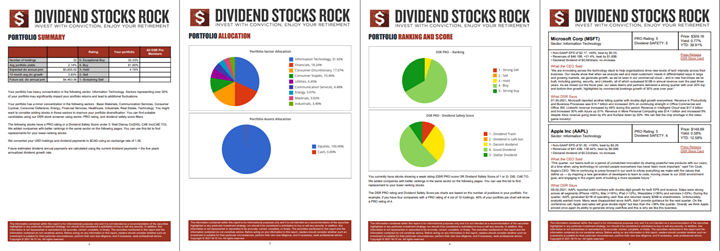
Download my portfolio Q1 2024 report.
Dividend Income: $201.16 CAD (+138% vs April 2023)
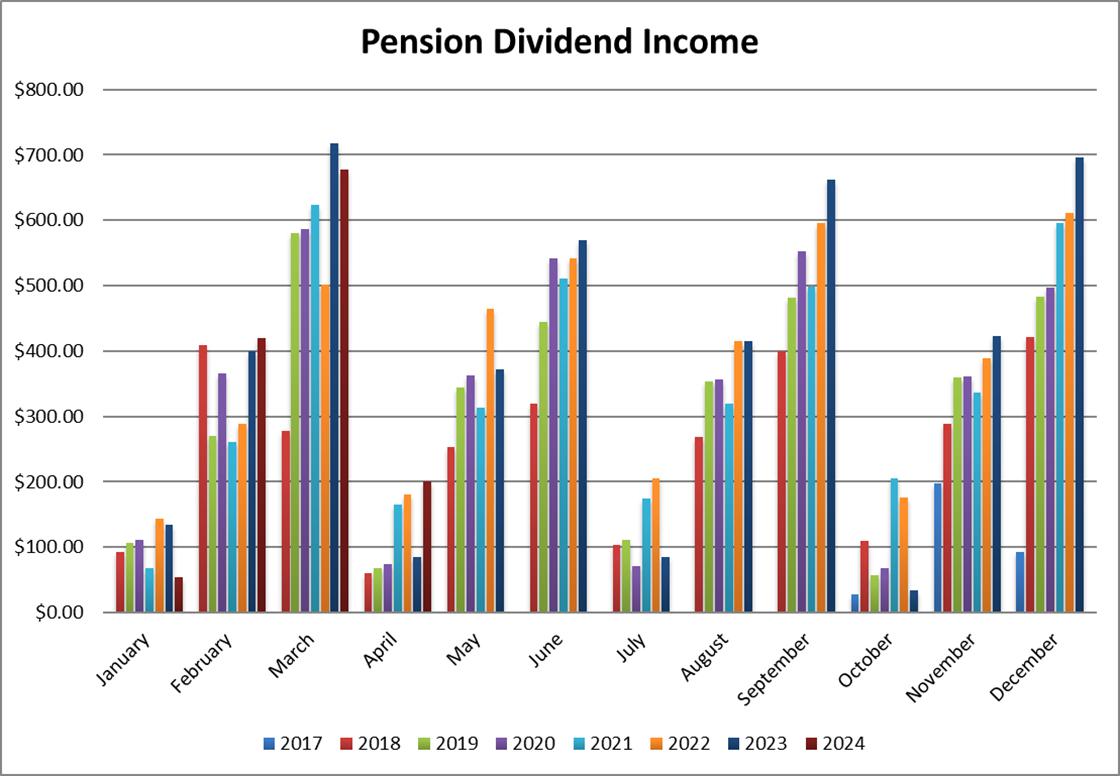
It’s nice to see a 138% jump in my dividends, but that’s just because I added many positions that didn’t pay on that month! Stella-Jones and ADP are two new additions balancing my dividend income.
It’s still nice to see two strong dividend growers coming into play!
Dividend growth (over the past 12 months):
- Granite: +3%
- Couche-Tard: +4% (I sold some shares)
- Stella Jones: new
- ADP: new
- Currency: +2.96%
Canadian Holding payouts: $128.40 CAD.
- Granite: $35.19
- Couche-Tard: $52.33
- Stella Jones: $40.88
U.S. Holding payouts: $53.20 USD.
- ADP: $53.20
Total payouts: $201.16 CAD.
*I used a USD/CAD conversion rate of 1.3677
Since I started this portfolio in September 2017, I have received a total of $25,465.09 CAD in dividends. Keep in mind that this is a “pure dividend growth portfolio” as no capital can be added to this account other than retained and/or reinvested dividends. Therefore, all dividend growth is coming from the stocks and not from any additional capital being added to the account.
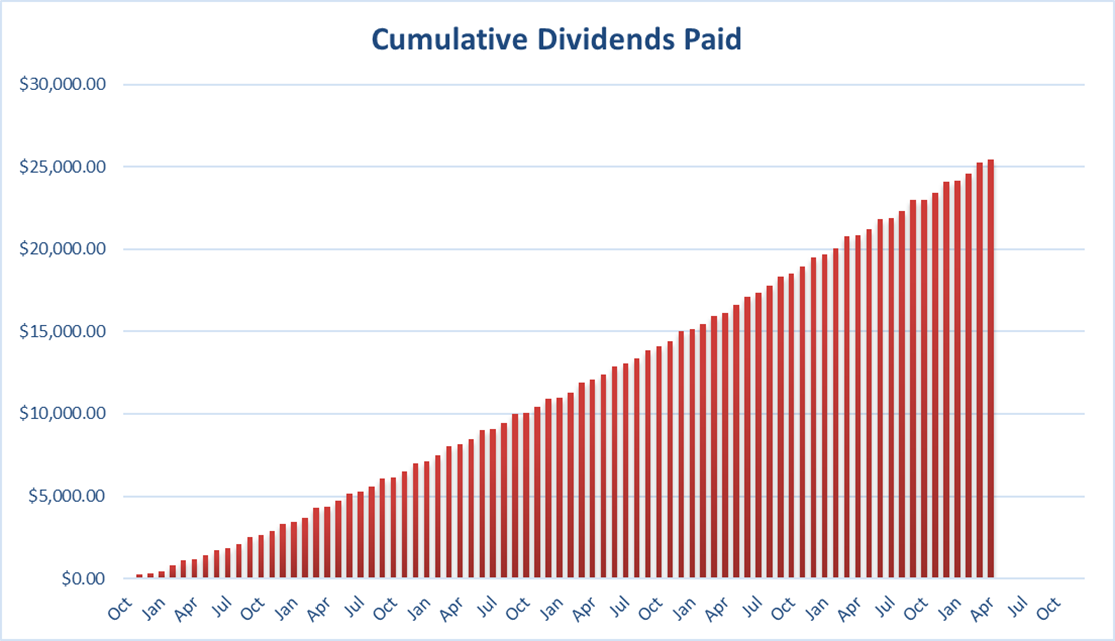
Final Thoughts
Last month, I told you I would likely sell my shares of Magna International. The funny thing is, I was so busy that I forgot to look carefully at my buy list and process the trade. It shows that even if you work in the industry, you sometimes forget to take care of your own business!
The good news is that I’ll have a little more dividend to reinvest next month and I’ll be able to start a decent position in a new company. Stay tuned!
Cheers,
Mike.

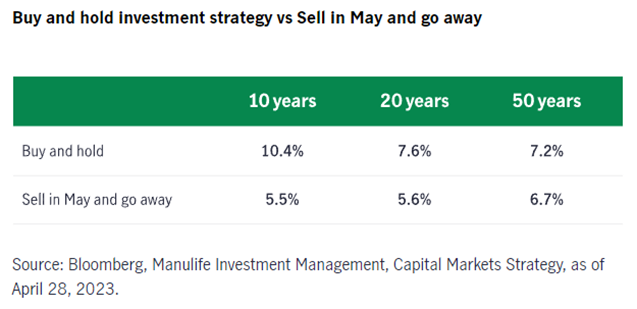







Leave a Reply